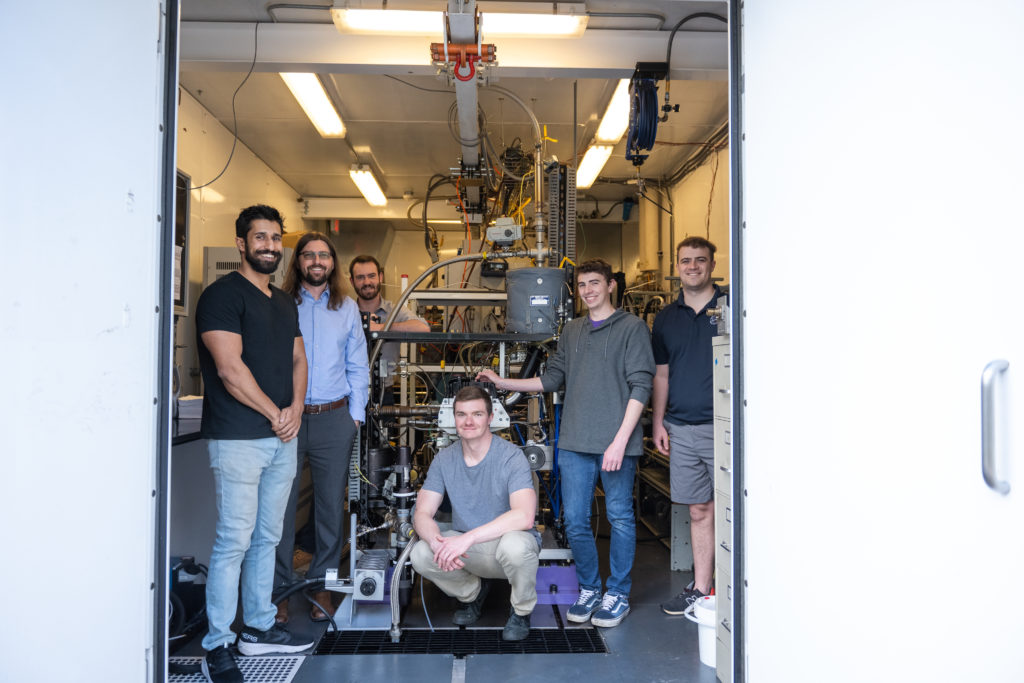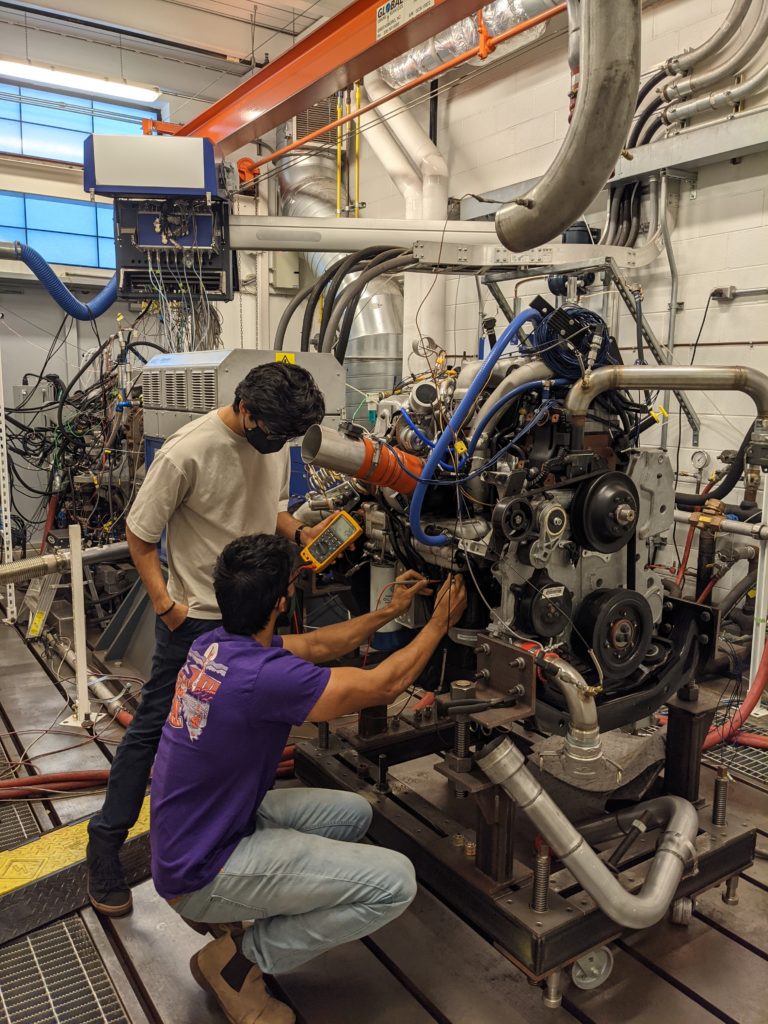Overview
Clemson University’s Advanced Combustion and Renewable Fuels (ACRF) Laboratory is devoted to researching strategies to reduce carbon and pollutant emissions from transportation through next generation energy and combustion technologies combined with renewable low net-carbon fuels. A photo of the team is shown below, in the Advanced Combustion and Heat Transfer Test Cell, which is described in more detail on the Facilities page.

Motivation
Society needs an efficient and sustainable solution to transport people and goods, which, most importantly, needs to be affordable and immediately implementable. We don’t have time to wait!

The most immediate and direct mechanism to have a positive impact on carbon and pollutant emissions from transportation is to improve combustion engines. Numerous projections state that combustion engines will remain the primary energy conversion technology in worldwide transportation through 2050 due to market growth in developing countries. If we can’t find an affordable solution to improve the carbon-neutrality of combustion engines, we will not meet the 2 degrees Celsius target of the Paris and Glasgow climate pacts. Our climate can’t wait, and our society needs a solution.
Fortunately, renewable low net-carbon fuels have been under development for decades and have achieved commercial success, and they’ve done so without most of the general public even knowing it. In 2019, 29 billion gallons of ethanol were produced worldwide, with the U.S. as the largest producer (15.8 billion gallons). Ethanol is a low net-carbon biofuel. As a biofuel, any CO2 produced through combusting ethanol was originally absorbed by the plants that produced the ethanol through photosynthesis. Current ethanol production is not completely carbon-neutral because there is energy consumed during ethanol production; however, lifecycle analyses estimate that ethanol’s lifecycle CO2 emissions are at least 40% lower than fossil fuels. In other words, we have already implemented a solution that is reducing greenhouse gas emissions from transportation by 40% and it didn’t require consumers to change their habits or pay more out of pocket – so much so that they didn’t even notice that we’ve been doing this for years. Renewable low net-carbon fuels are the affordable and immediate solution that society needs to address climate change.
However, renewable fuels need better advocacy and we still need to answer the question of how best to use these fuels in combustion engines, which is the mission of the ACRF Lab.
Mission
The mission of the Advanced Combustion and Renewable Fuels Lab is to better understand the thermodynamics and combustion processes in engines to improve their efficiency and emissions characteristics, particularly in relation to renewable fuels like methanol and ethanol, which have unique fuel properties compared to conventional fuels.

The team has experimental and modeling expertise related to conventional and advanced combustion modes, alternative engine architectures, and various conventional and renewable fuels.
History: The Advanced Combustion and Renewable Fuels Lab at Clemson University’s International Center for Automotive Research (CU-ICAR) originated from the Engine Combustion Research Group (ECRG), which was founded in 2015 at Stony Brook University, but moved to Clemson in the summer of 2019. Since then, the team has enhanced some of the existing experimental engine research facilities at CU-ICAR and built additional facilities using donations from industry and internal resources to add diversity to the experimental capabilities.
For computational modeling, Clemson University already had the Palmetto High Performance Computing (HPC) Cluster, the fourth ranked HPC cluster in the country among academic institutions. The ACRF worked with Convergent Science, Inc. to gain access to enough Converge super-base licenses to never be limited on the Palmetto cluster (special thanks to Converge! and to Clemson’s CITI team!). The team also has access to GT-Suite licenses, and Abaqus for FEA. For more information, please see the Facilities, Research, and Publications pages in the menu bar.
